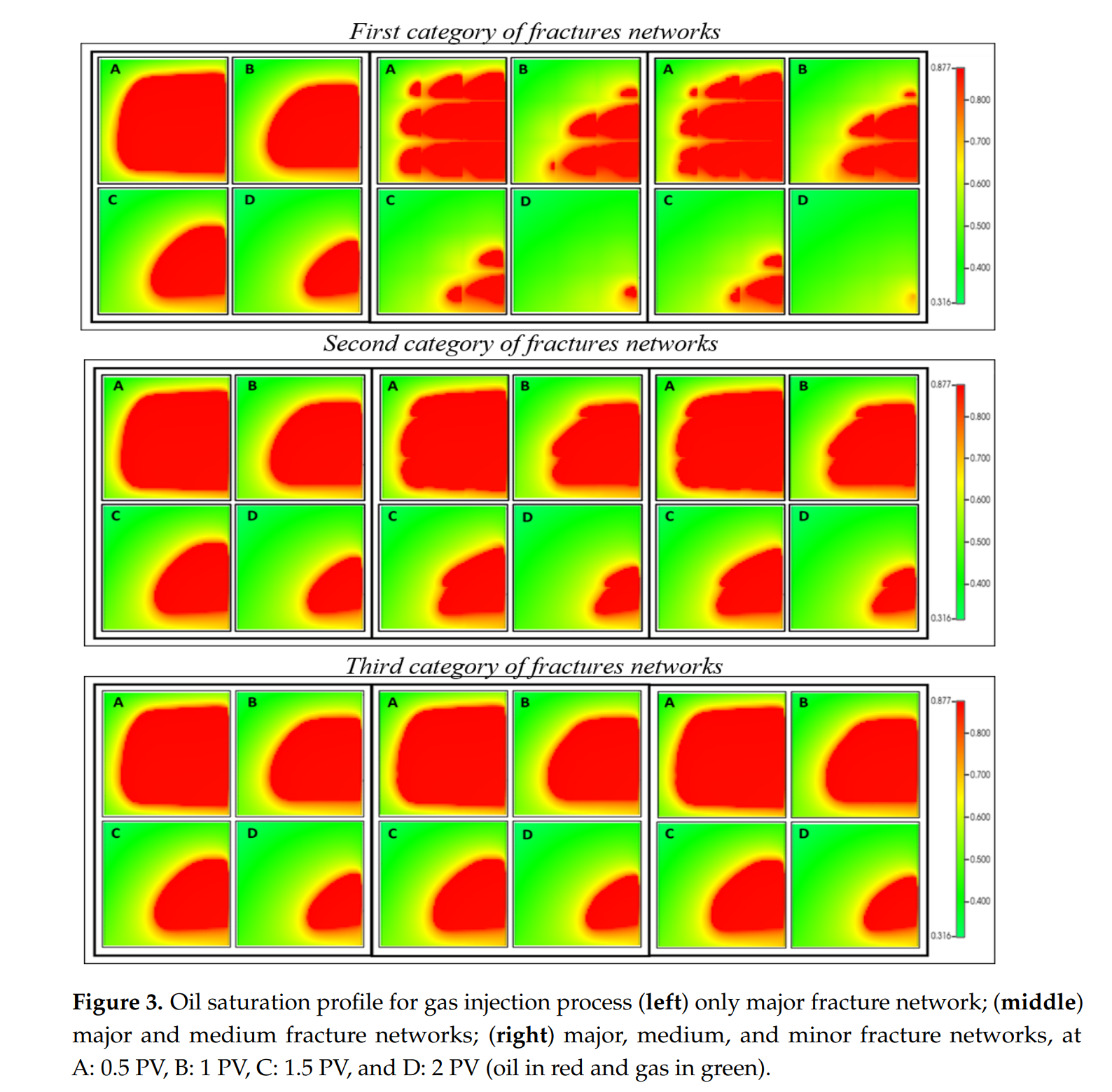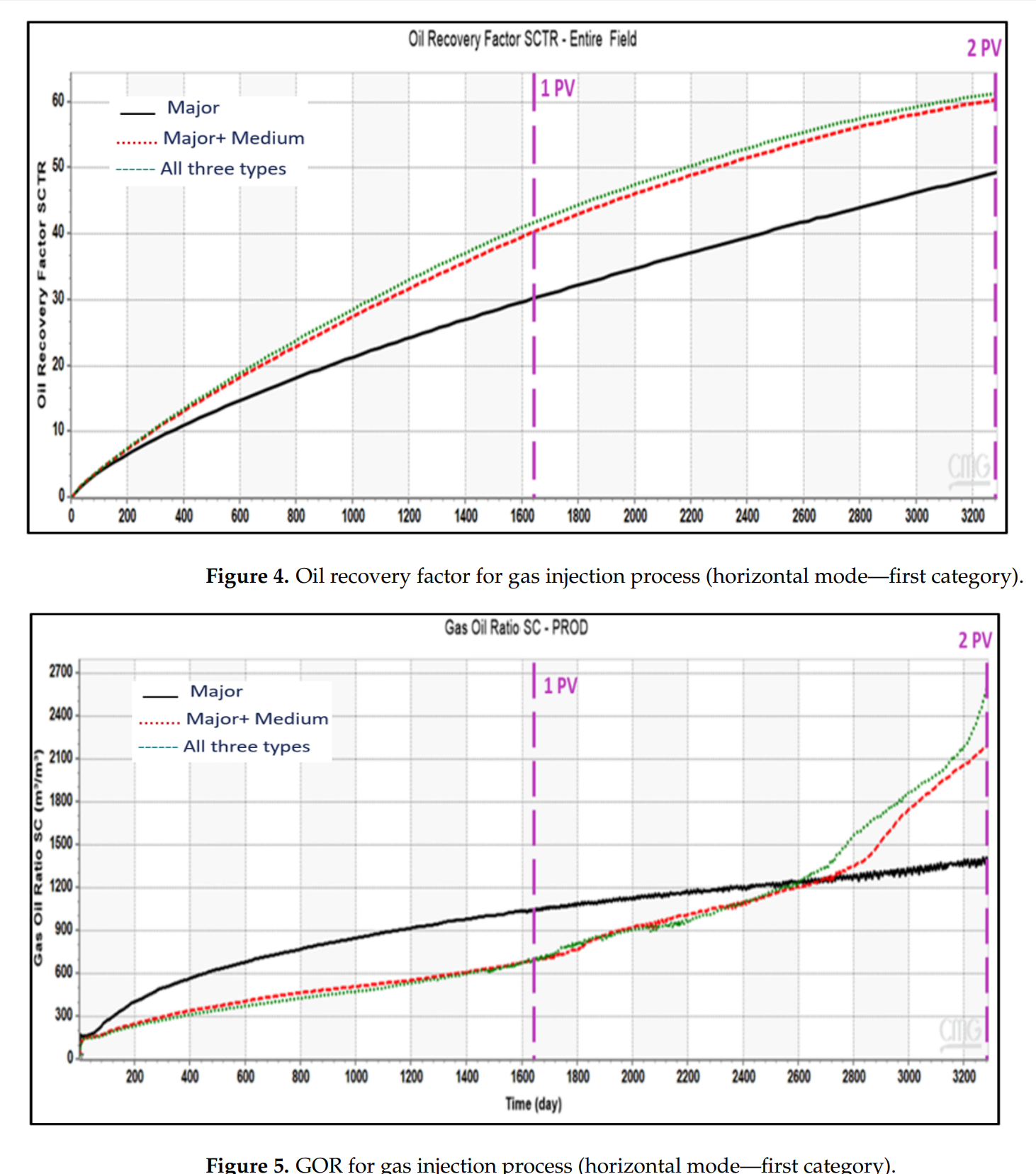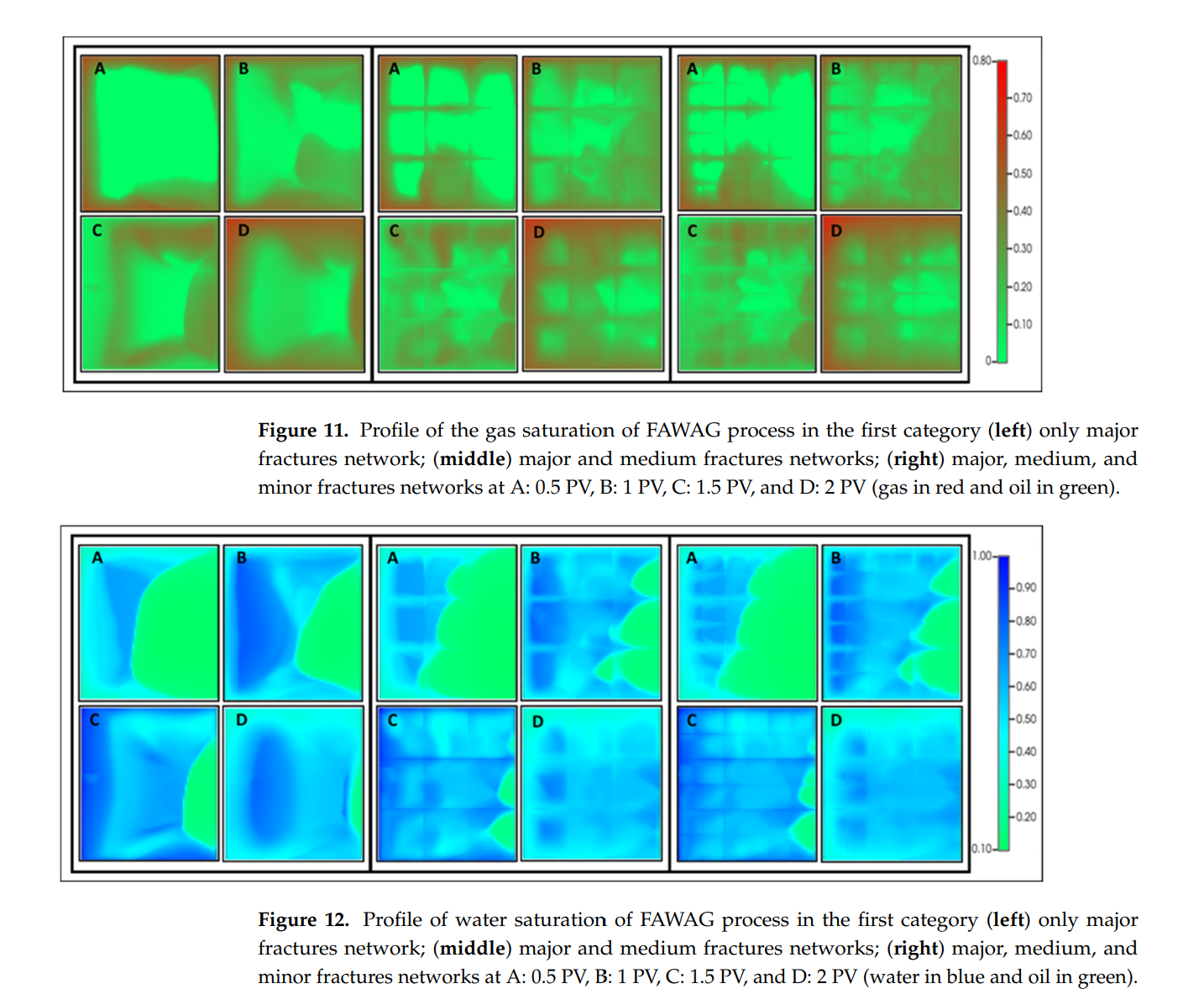Assessing the Influence of Fracture Networks on Gas-Based Enhanced Oil Recovery Methods
本研究探讨了裂缝网络对基于气体的提高采收率(EOR)方法开发效果的影响。裂缝网络的表征对于模型构建和生产效果预测至关重要。本研究采用离散裂缝网络(DFN)模型,创建了二维模型,模拟了气体注入(GI)、气水交替(WAG)和泡沫辅助气水交替(FAWAG)三种过程。通过无量纲数建立了整个裂缝层次结构中属性之间的联系。
研究结果表明,FAWAG过程对裂缝类型和网络的敏感性高于WAG和GI过程。因此,个别EOR方法对裂缝网络的敏感性要求裂缝网络有相应的详细描述。然而,当排除次级裂缝网络时,其他因素如储层流体属性和裂缝属性可能会影响采收率。研究发现,随着主要(主裂缝)孔隙度与中小型裂缝孔隙度的比率增加,裂缝网络的层次深度的重要性在所考察的提高采收率(EOR)技术中降低了。此外,辅助重力泄油方法的影响随着储层高度的增加而增大;但是,随着强度比的增加,中小型裂缝网络的相对重要性降低了。
CMG软件应用情况:
本研究中使用了CMG 2020.1版本的软件,该版本允许在不需要额外上尺度程序的情况下对各种离散裂缝网络进行模拟。研究中引入了离散裂缝单元(DFU)和离散裂缝段(DFS)的概念,通过定义DFN的显式位置来嵌入控制体积段。每个裂缝平面直接与相应的基质网格相交,形成连接的网络。DFN基于DFU的形状、方向、孔隙度和渗透率进行离散化。然后,根据与基质网格的交叉,每个DFU被离散化为DFS。裂缝的流动能力基于裂缝孔隙度和渗透率确定。本研究利用这种方法检验了不同裂缝网络集对生产和开采过程的影响。






Abstract
Numerous reservoirs that play a significant role in worldwide petroleum production and reserves contain fractures. Typically, the fractures must form a connected network for a reservoir to be classified as naturally fractured. Characterizing the reservoir with a focus on its fracture network is crucial for modeling and predicting production performance. To simplify the solution, dual-continuum modeling techniques are commonly employed. However, to use continuum-scale approaches, properties such as the average aperture, permeability, and matrix fracture interaction parameters must be assigned, making it necessary to improve the fracture depiction and modeling methods. This study investigated a fractured reservoir with a low matrix permeability and a well-connected fracture network. The focus was on the impact of the hierarchical fracture network on the production performance of gas-based enhanced oil recovery methods. The discrete fracture network (DFN) model was utilized to create comprehensive two-dimensional models for three processes: gas injection (GI), water alternating gas (WAG), and foam-assisted water alternating gas (FAWAG). Moreover, dimensionless numbers were employed to establish connections between properties across the entire fracture hierarchy, spanning from minor to major fractures and encompassing the fracture intensity. The results indicate that the FAWAG process was more sensitive to fracture types and networks than the WAG and GI processes. Hence, the sensitivity of the individual EOR method to the fracture network requires a respective depth of description of the fracture network. However, other factors, such as reservoir fluid properties and fracture properties, might influence the recovery when the minor fracture networks are excluded. This study determined that among the enhanced oil recovery (EOR) techniques examined, the significance of the hierarchical depth of fracture networks diminished as the ratio of major (primary fracture) aperture to the aperture of medium and minor fractures increased. Additionally, the impact of the assisted-gravity drainage method was greater with increased reservoir height; however, as the intensity ratio increased, the relative importance of the medium and minor fracture networks decreased.
Keywords:
fractures networks; foam-assisted water alternating gas; water alternating gas; gas injection; discrete fracture model introduction
作者单位:奥地利莱奥本矿业大学(Montanuniversität Leoben)
